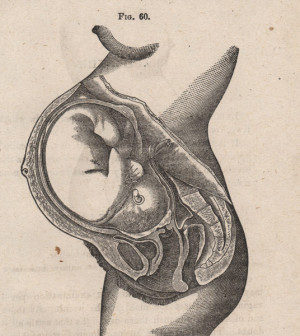- Skip Storing This Everyday Product in the Fridge Door
- Green Tea + B3 Pairing May Boost Brain Health
- Navigating Your Midlife Crisis: Embracing New Possibilities
- City Raccoons Showing Signs of Domestication
- Mapping the Exposome: Science Broadens Focus to Environmental Disease Triggers
- One Week Less on Social Media Linked to Better Mental Health
- Your Brain Changes in Stages as You Age, Study Finds
- Some Suicide Victims Show No Typical Warning Signs, Study Finds
- ByHeart Formula Faces Lawsuits After Babies Sickened With Botulism
- Switch to Vegan Diet Could Cut Your Greenhouse Gas Emissions in Half
Spoon Measurements Behind Many Child Drug-Dosing Errors: Study


Using a teaspoon or tablespoon to administer kids’ medications can often lead to medication dosing errors, a new study reports.
Teaspoon- or tablespoon-based medicine instructions doubled a parent’s chances of incorrectly measuring the intended dosage, and also doubled the risk they would not accurately follow the doctor’s prescription, the study authors found.
“A move to a milliliter preference for dosing instructions for liquid medications could reduce parent confusion and decrease medication errors, especially for groups at risk for making errors, such as those with low health literacy and non-English speakers,” said the study’s lead author Dr. Shonna Yin, an assistant professor of pediatrics at NYU School of Medicine in New York City.
Findings from the study were published online July 14 and in the August print issue of Pediatrics.
More than 10,000 annual calls to poison centers occur because the wrong dose of oral liquid medications was given to a child, according to background information included in the study.
A number of groups have suggested that pediatricians and pharmacists switch to milliliter dosing for young patients, including the American Academy of Pediatrics, the U.S. Centers for Disease Control and Prevention, and the Institute for Safe Medication Practices.
To test whether this would help, Yin and her colleagues observed 287 parents providing medicine to their children.
The investigators found that, overall, 39 percent of parents incorrectly measured the dose they intended and, ultimately, 41 percent made an error in measuring what their doctor had prescribed.
Parents using teaspoon or tablespoon measurements were 2.3 times more likely to pour the wrong dose and 1.9 times more likely to not accurately follow the prescription, the researchers said.
Nearly one-third of the parents given instructions with teaspoon or tablespoon doses reached for a kitchen spoon, which made them 2.5 times more likely to get the dose wrong, said co-author Dr. Ian Paul, associate vice chair for research at the Penn State College of Medicine department of pediatrics.
“When you look at a kitchen spoon, the amount that will actually sit in the spoon is less likely to be exactly what it’s meant to be,” Paul said. “You’re less likely to get the right amount onto that spoon and then deliver it to a child’s mouth.”
The inaccuracy of kitchen spoons becomes even more worrisome given that drugs are prescribed to children based on their weight, to make sure they are receiving a precise dose, said Heather Free, a pharmacist in Washington, D.C., and spokeswoman for the American Pharmacists Association.
Kids are more sensitive than adults to many drugs, and getting the dose even slightly wrong can lead to problems.
“Just a tiny amount, a milliliter more, can increase toxicity levels or underdose the patient,” Free said.
Some parents also have trouble distinguishing a teaspoon from a tablespoon, or the abbreviation tsp. from tbsp., Paul said.
“It’s not readily apparent that abbreviation stands for teaspoon, not tablespoon, especially for those parents with low health literacy,” Paul said.
To ward off dosing errors, some pharmacy chains now dole out pediatric prescriptions with milliliter dosing instructions and provide parents with oral syringes to accurately measure each dose, Free said.
Free herself uses milliliter dosing in filling prescriptions for children, and even marks the prescribed dose on the oral syringe so parents don’t have to eyeball the right amount each time.
Parents should not be afraid to ask their doctor or pharmacist to make their child’s prescription easier to administer, Yin said.
“Parents should ask their doctor or pharmacist to tell them the dose in milliliters instead of teaspoons and tablespoons,” she said. “Parents should also make sure to use a dosing device, like an oral syringe, dropper or dosing spoon, rather than a kitchen spoon, to measure out the dose.”
Pharmacies have accurate dosing devices on hand and should provide them if asked, Free said.
“If the pharmacist does not provide it, I encourage parents to ask your pharmacist for one of their disposable oral syringes, and make sure they are familiar for how to use it,” she said.
More information
For more information on giving medication to children, visit the U.S. Food and Drug Administration.
Source: HealthDay
Copyright © 2025 HealthDay. All rights reserved.










